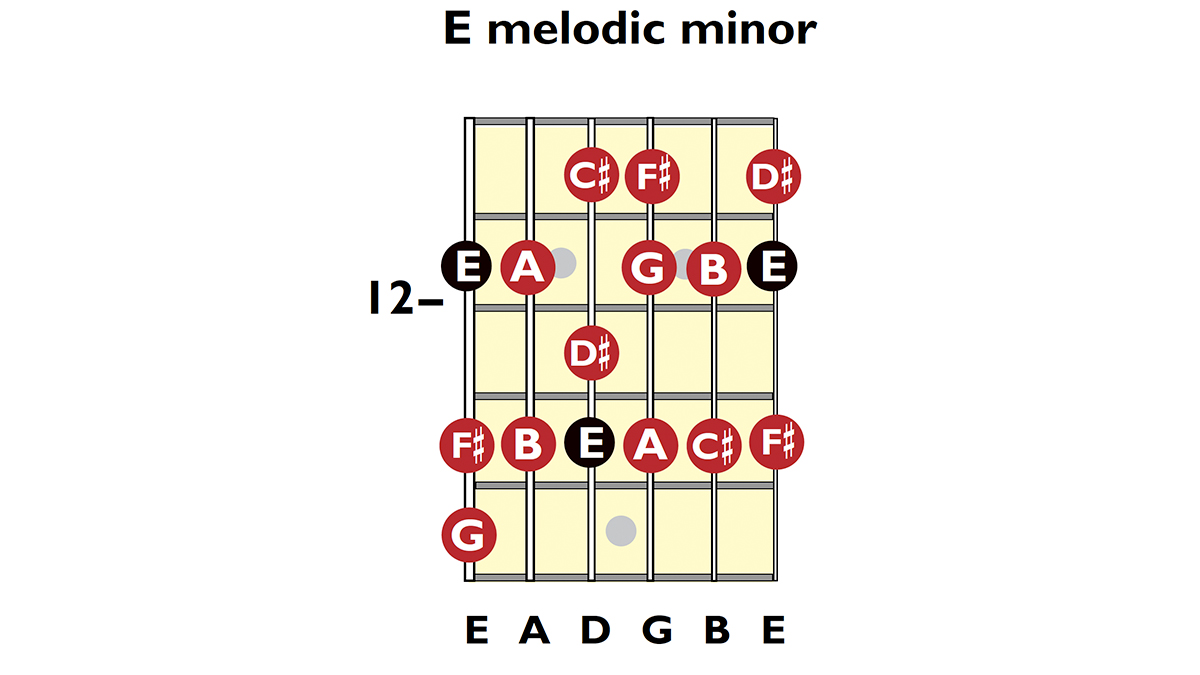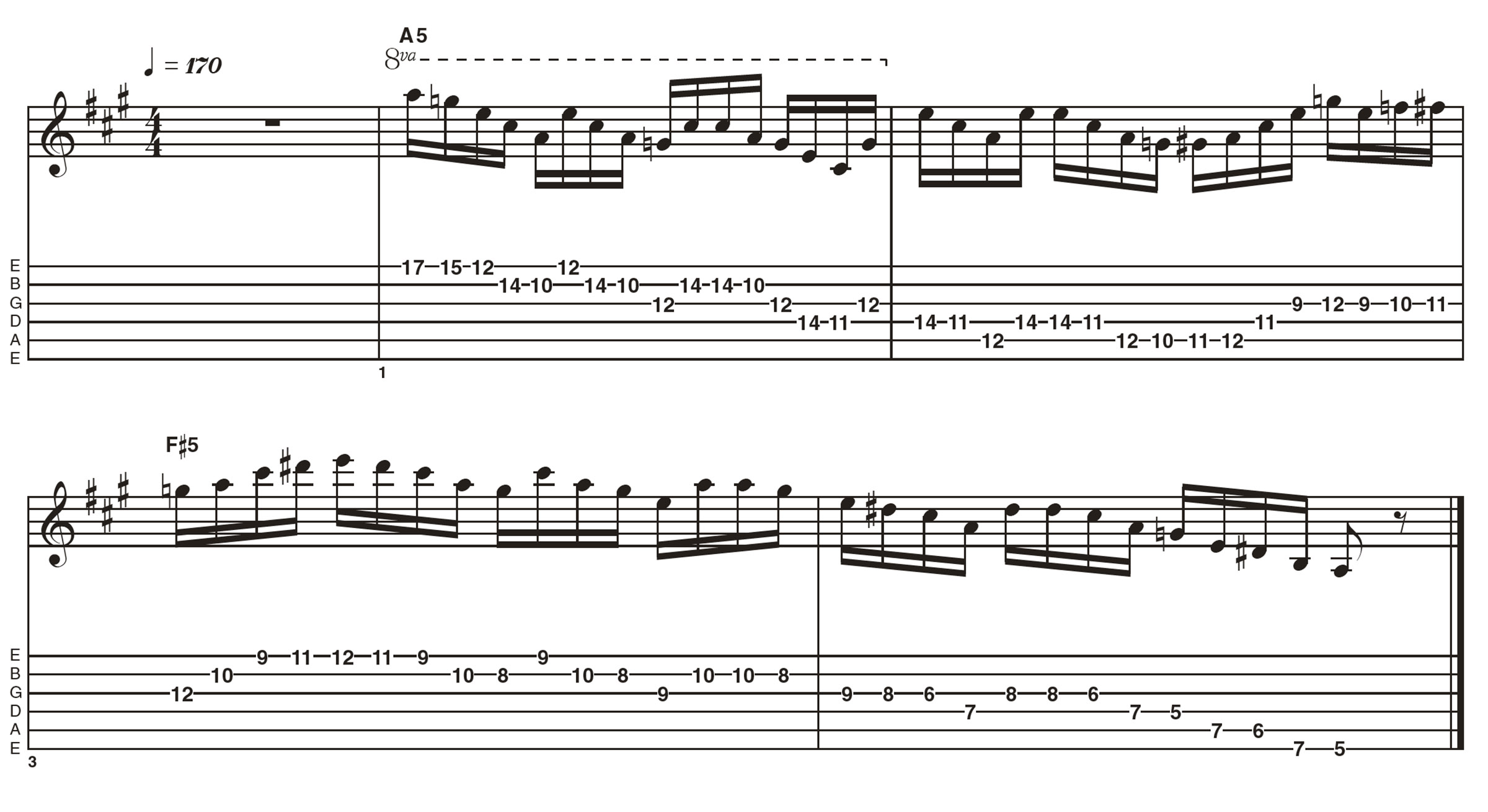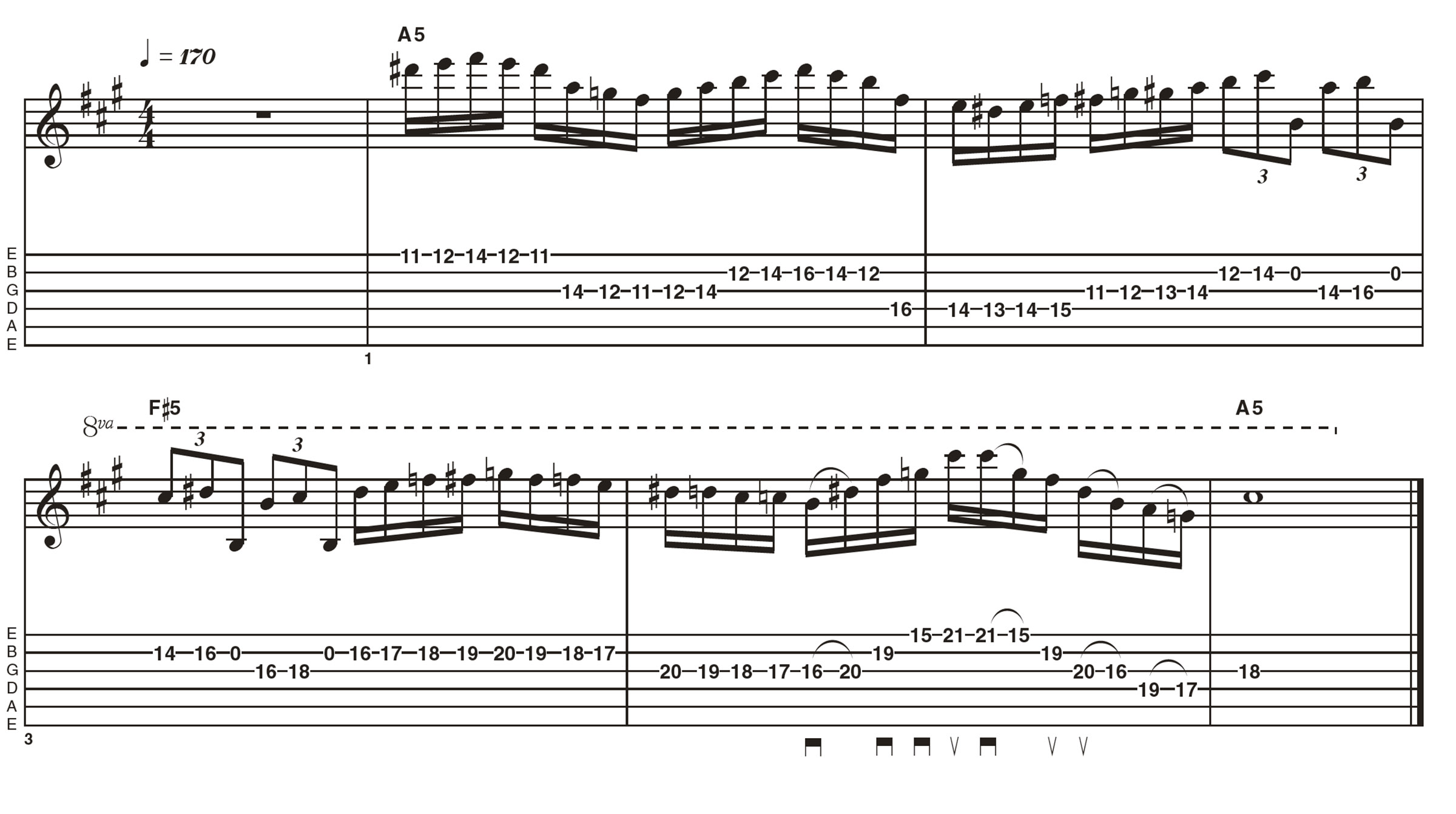Progressive jazz and fusion players swear by the Lydian Dominant and Superlocrian modes – and they'll take your soloing in whole new directions
In this JTC Guitar collab, we meet a brilliant Greek guitarist, teacher and performing musician with a fusion lesson that will blow your mind – and fretboard – wide open

Centuries ago, the melodic minor scale evolved through the practice of raising the 6th and 7th notes or intervals when ascending the natural minor scale, therefore providing more powerful melodic and harmonic resolutions.
While it’s a powerful scale for a sophisticated sound, two of its associated modes have become essential for progressive jazz and fusion players: the Lydian Dominant and Superlocrian (aka the altered scale). The beauty of these two particular modes is that they contain the colour notes used in Altered Dominant chords such as 7b9, 7#9, 7#11, and 7#5.
It’s pretty easy to get started with the Lydian Dominant mode and its clear 7#11 sound, but Superlocrian is quite the enigma. It’s ostensibly a minor or diminished scale, but we do a little trick with it, interpreting the b4 note as the major 3rd. Take B Superlocrian (B-C-D-Eb-F-G-A). With our trick the Eb becomes D# and then we’re looking at a mash-up of the main four altered B7 arpeggios.
In the full JTC Guitar package ‘Code: Melodic Minor’, the terrifying George Karayiannis from Athens, Greece, takes you methodically through all this theory. Here’s a few tasters!
Figure 1

Let’s start with the basics: an E melodic minor (E-F#-G-A-B-C#-D#) box shape. Do try to find other fingerings around the fretboard for this, always observing the pattern of intervals. Notice the combination of minor 3rd (G) with the major 6th (C#) and major 7th (D#).
Example 1. Minor major 7 chord and arpeggio
As mentioned before, the regular melodic minor scale is a rich and sophisticated scale. An important aspect of its characteristic quality is the minor sound with a major 7th. To provide an explicit example of this, here is an E minor arpeggio (E-G-B) with an added major 7th (D#). Play the chord then the arpeggio to soak it in.
Example 2. Dominant 7#11 exercise
This is where the fun starts! If we take the notes of E melodic minor, but using A as the root, we get A Lydian Dominant (A-B-C#-D#-E-F#-G). The signature sound of this scale is the A7#11 arpeggio, built from a regular A7 (A-C#-E-G) plus #11th (D#).
All the latest guitar news, interviews, lessons, reviews, deals and more, direct to your inbox!
Example 3. Dominant 7#11 lick
Of our two modes, the Lydian Dominant is probably easier to use. It can create melodic interest over almost any Dominant 7th chord (in a V7-I change, for example). Here, George focuses mostly on the A7#11 arpeggio notes over a busy A5-F#5 chord vamp but it’s usage could be for a much simpler A7 blues groove.
Example 4. String skipping lick
Although the Altered Dominant mode is associated with jazz, there’s nothing to stop you using it for 80s metal shred! George takes a more scale-based approach here, filling in some gaps with chromatic passing notes. Notice the use of triplets and open strings between bars 2 and 3. Use alternate picking where possible.
Example 5. Dom 7#5 exercise
Switching to C melodic minor (C-D-Eb-F-G-A-B) but using B as the root creates B Superlocrian (B C D D# F G A). As mentioned above, this is quite the theoretical enigma, hence the D# (not Eb) spelling. Here’s one of its characteristic sounds: the B7#5 arpeggio. Notice the G note provides the tense #5 sound.
Example 6. Dom7#5flat9 lick
As with Lydian Dominant, Superlocrian is basically all about adding melodic interest and tension to Dominant 7th chords and the V7-I change. Here, George plays over the V7-I in E minor, using B Superlocrian over B7#5 and resolving to E blues scale (E-G-A-A#/Bb-B-D) over Em11.
Example 7. Minor 7flat5 lick
For our final example, playing over that same V7-I change in E Minor, George now superimposes an Am7b5 arpeggio over B7#5. This might sound crazy, but Am7b5 is one of the diatonic chords of B Superlocrian (and therefore C melodic minor). You can do this kind of thing with any scale. Enjoy these exhilarating examples!







